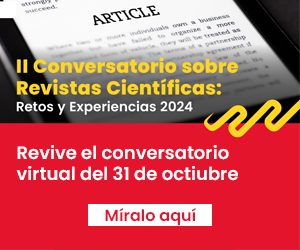Trastorno de Acumulación: A propósito de un caso
DOI:
https://doi.org/10.20453/rnp.v86i1.4469Palabras clave:
Trastorno de acumulación, acaparamiento, terapia cognitiva conductual, psicotrópicosResumen
El trastorno de acumulación se caracteriza por una extrema dificultad para deshacerse o descartar artículos, independientemente de su valor real, originando con ello múltiples síntomas y problemas cotidianos de todo tipo. Aunque la severidad es más marcada en adultos mayores, el cuadro es de instalación progresiva a lo largo de varias décadas. Se presenta el caso de un paciente varón de 49 años, con inicio de la enfermedad desde los 15 años, guardando libros y cuadernos usados con la idea de que podrían ser útiles en el futuro; además de manifestaciones significativas de ansiedad. La acumulación de otros objetos como herramientas, ropa y utensilios de cocina se fue intensificando junto con el incremento de la ansiedad tras varias pérdidas familiares. El paciente buscó atención médica en diferentes centros sin encontrar alivio. Finalmente, el diagnóstico, el tratamiento psicofarmacológico y psicoterapéutico fueron replanteados con resultados favorables.
Descargas
Citas
Frías A, Palma C, Barón F, Bernáldez I, Aluco E. Estatus nosológico de la acumulación compulsiva: ¿subtipo de trastorno obsesivo-compulsivo o entidad clínica independiente? Actas Esp Psiquiatr. 2014;42(3): 116-24.
American psychiatric Association. Diagnostic and statistical manual of mental disorders (DSM-5). Washington DC: American psychiatric Association; 2013.
World Health Organization International. Classification of Diseases (ICD11). Geneva: World Health Organization; 2018.
Cappelletti S, Cipolloni L, Piacentino D, Aromatario M. A lethal case of hoarding due to the combination of traumatic and confined space asphyxia. Forensic Sci Med Pathol. 2018;15(1):114-118.
Mataix D. Clinical practice. Hoarding disorder. N Engl J Med. 2014;370(21):2023-30.
Ayers CR, Najmi S, Mayes TL, Dozier ME. Hoarding disorder in older adulthood. Am J Geriatr Psychiatry. 2015;23(4):416-422.
Castello T. El espectro obsesivo compulsivo en el DSM-5. C Med Psicosom. 2014;112:22-27.
Fontenelle L, Grant J. Hoarding disorder: a new diagnostic category in ICD-11. Rev Bras de Psiquiatr. 2014; 36 (suppl 1):28-39.
Hall BJ, Tolin DF, Frost RO, Steketee G. An exploration on comorbid symtoms and clinical correlates of clinically significant hoarding symtoms. Depress Anxiety. 2013;30(1):67-76.
Ivanov VZ, Mataix-Cols D, Serlachius E, Lichtenstein P, Anckarsater H, Chang Z, et al. Prevalence, comorbidity and heritability of hoarding symptoms in adolescence: A population based twin study in 15-year olds. PLOS ONE. 2013;8(7): e69140.
Roane DM, Landers A, Sherratt J, Wilson GS. Hoarding in the elderly: a critical review of the recent literature. Int Psychogeriatr. 2017;29(7):1077-1084.
Samuels JF, Bienvenu OJ, Grados MA, Cullen B, Riddle MA, Liang KY, et al. Prevalence and correlates of hoarding behavior in a community-based sample. Behav Res Ther. 2008;46(7):836-44.
Iervolino AC, Perroud N, Fullana MA, Guipponi M, Cherkas L, Collier DA, Mataix-Cols D. Prevalence and heritability of compulsive hoarding: a twin study. Am J Psychiatry. 2009;166(10):1156-61.
Mathes B, Kennedy G, Cougle J, Schmidt N. An examination of the relationship between hoarding symptoms and hostility. J. Psychiatr. Res. 2019;111: 121-127.
Cath DC, Nizar K, Boomsma D, Mathews CA. Age-specific prevalence of hoarding and obsessive compulsive disorder: a population-based study. Am J Geriatr Psychiatry. 2017;25(3):245-255.
Mathews CA, Delucchi K, Cath DC, Willemsen G, Boomsma DI. Partitioning the etiology of hoarding and obsessive-compulsive symptoms. Psychol Med. 2014; 44(13):2867-76.
Mueller A, Mitchell JE, Crosby RD, Glaesmer H, de Zwaan M. The prevalence of compulsive hoarding and its association with compulsive buying in a German population-based sample. Behav Res Ther. 2009;47(8):705-9.
Kajitani K, Tsuchimoto R, Nagano J, Nakao T. Relevance of hoarding behavior and the traits of developmental disorders among university students: a self-reported assessment study. Biopsychosoc Med. 2019;13:13.
Dozier ME, Porter B, Ayers CR. Age of onset and progression of hoarding symptoms in older adults with hoarding disorder. Aging & Mental Health. 2016; 20(7):736-742.
Pertusa A, Frost RO, Fullana MA, Samuels J, Steketee G, Tolin D, et al. Refining the diagnostic boundaries of compulsive hoarding: a critical review. Clin Psychol Rev. 2010;30(4):371-86.
Frost RO, Steketee G, Tolin D. Comorbidity in Hoarding disorder. Depression Anxiety 2011;28:876-84.
Saxena S. Neurobiology and treatment of compulsive hoarding. CNS spectrum 2008, 13:9 (suppl14) 26-36.
Porat-Katz B, Johnson TW, Katz I, Rachman-Elbaum S. Hoarding among Jewish Holocaust Survivors: Moving Toward a Theoretical Model. Isr Med Assoc J. 2018;20(11):670-673.
Tolin D, Meunier S, Frost R, Steketee G. Course of compulsive hoarding and its relationship to life events. Depress Anxiety. 2010;27(9):829-38.
Mathews C. Hoarding disorder: More than just a problem of too much stuff. J Clin Psychiatry; 2014;75(8):893-4.
Irvine JD, Nwachukwu K. Recognizing Diogenes Syndrome: a case report. BMC Res Notes. 2014;7:276.
Grisham J, Frost R, Steketee G, Kim H, Tarkoff A, Hood S. Formation of attachment to possessions in compulsive hoarding. J. Anxiety Disord. 2009;23:357–361.
Burki T. Hoarding disorder: a medical condition. Lancet. 2018;392(10148):626.
Marks NF, Jun H, Song J. Death of parents and adult psychological and physical well-being: a prospective u.s. national study. J Fam Issues. 2007;28(12):1611-1638.
Williams M, Viscusi J. Hoarding disorder and a systematic review of treatment with cognitive behavioral therapy. Cogn Behav Ther. 2016;45(2):93-110.
Frost R, Hartl T. A Cognitive-Behavioral model of compulsive hoarding. Behav Res Ther. 1996;34(4):341-50.
Saxena S, Brody AL, Maidment KM, Baxter LR Jr. Paroxetine treatment of compulsive hoarding. J Psychiatr Res. 2007;41(6):481-7.
Saxena S. Pharmacotherapy of compulsive hoarding. J clinical of psychology. 2011;67(5): 477-84.
















